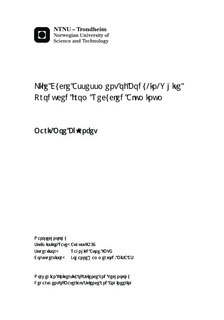Life Cycle Assessment of Body-in-White Produced from Recycled Aluminum
Master thesis
Permanent lenke
http://hdl.handle.net/11250/249636Utgivelsesdato
2014Metadata
Vis full innførselSamlinger
Sammendrag
The secondary production of aluminum has a large potential in terms of energy savings compared to primary production. Due to the increasing use of aluminum in products, there is a larger demand for aluminum than can be covered by secondary aluminum only. Today, most aluminum that reach end of life treatment is down-cycled. In the future the amount of available scrap will grow larger, and more secondary aluminum will become available for recycling. This gives motivation for closing recycling loops and minimize down-cycling. An investigation of the need for scrap sorting and refining is necessary, and the environmental impacts of the applied technologies should be examined. A suitable tool for doing this is an Life Cycle Assessment (LCA).The goal of the present study is to compare the environmental performance for an aluminum Body-in-White (BiW) made from three different material inputs, \textit{i.e.} primary aluminum, closed-loop recycled old BiWs and open-loop recycled end of life vehicle (ELV) scrap. This is done by performing an LCA. The challenges and benefits of switching from primary to secondary aluminum is enlightened. Based on the results found in the present study it is clear that scrap is the best input choice, in terms of environmental performance. However, large challenges with input data to the LCA model affects the quality of the results. It is reasonable to assume that the difference between the impact for the three scenarios will change if all inputs where added. The current project also discusses several aspects and challenges regarding the use of scrap as input to BiWs. This is necessary as the project is based on assumptions and projections on what the future might look like. First, the challenges of availability of suitable scrap. Second, the challenge of scrap economy and how this varies with time and politics. Third, the challenge of sufficient treatment of the scrap for obtaining an acceptable quality.
